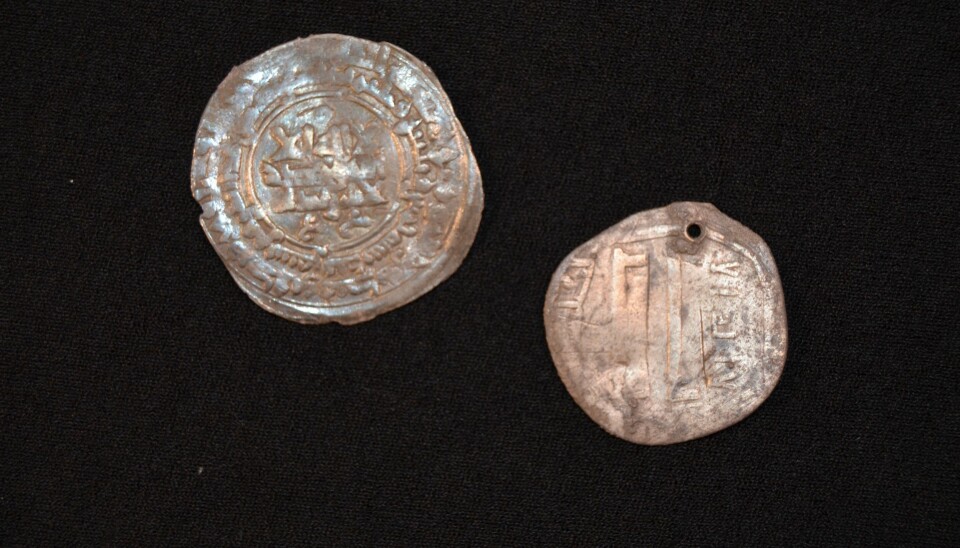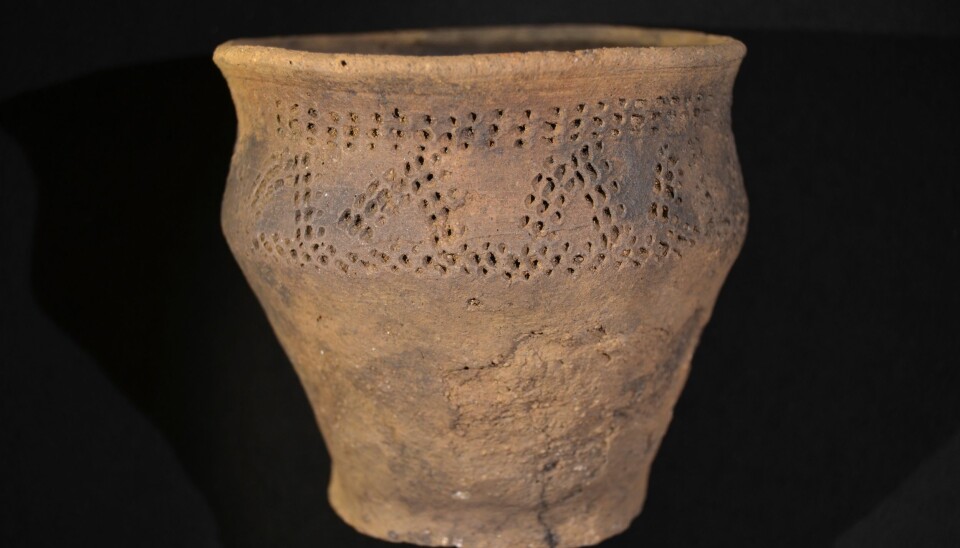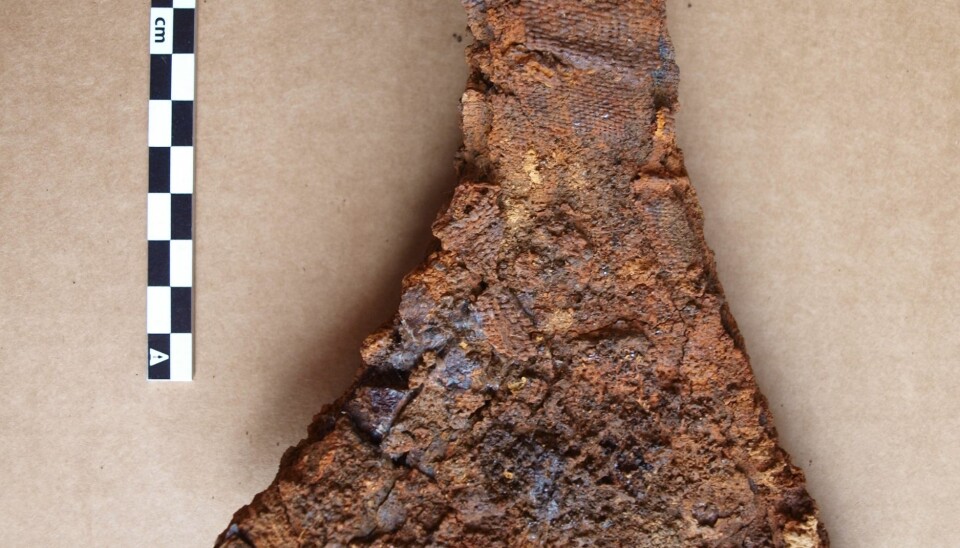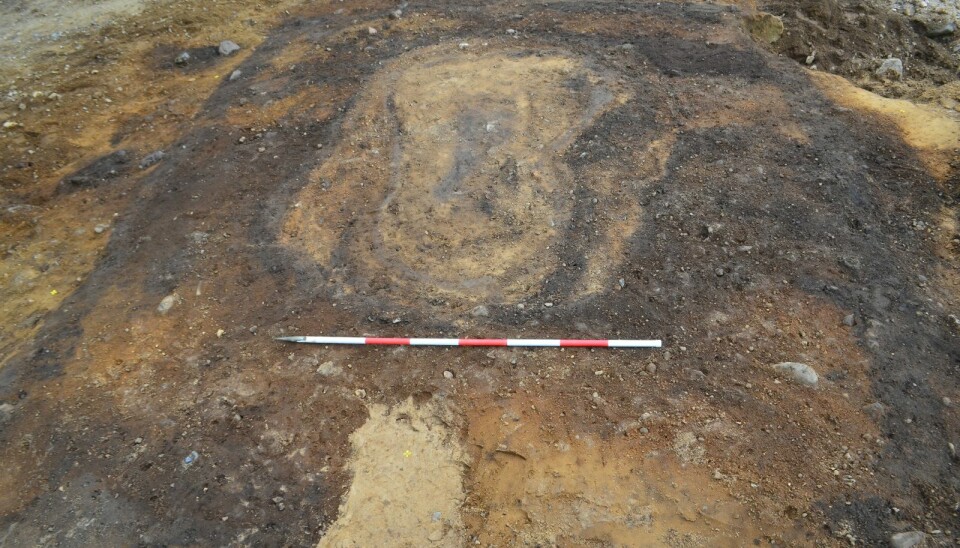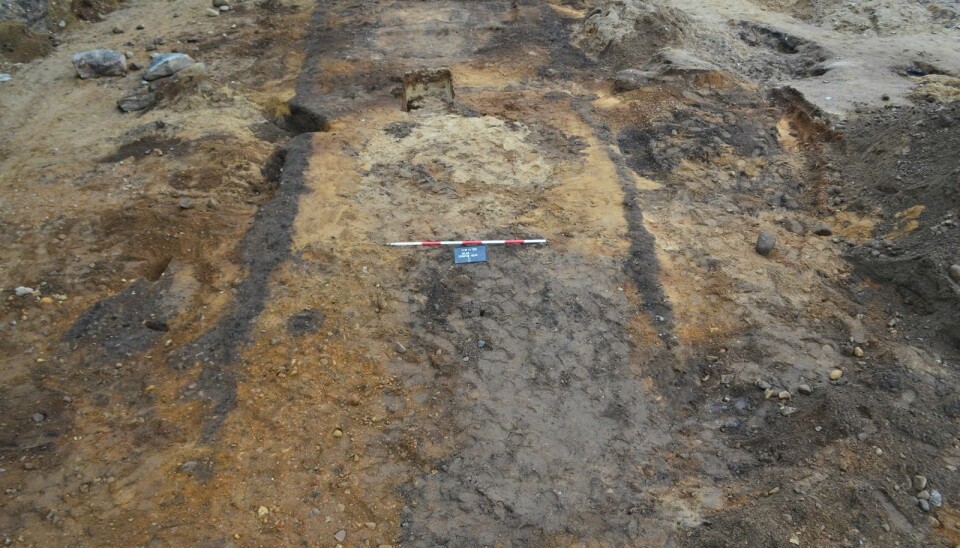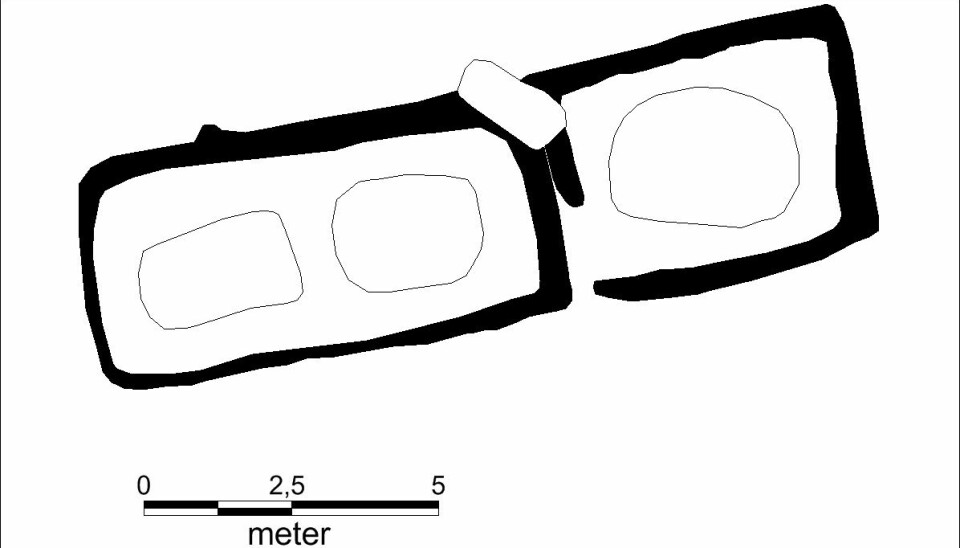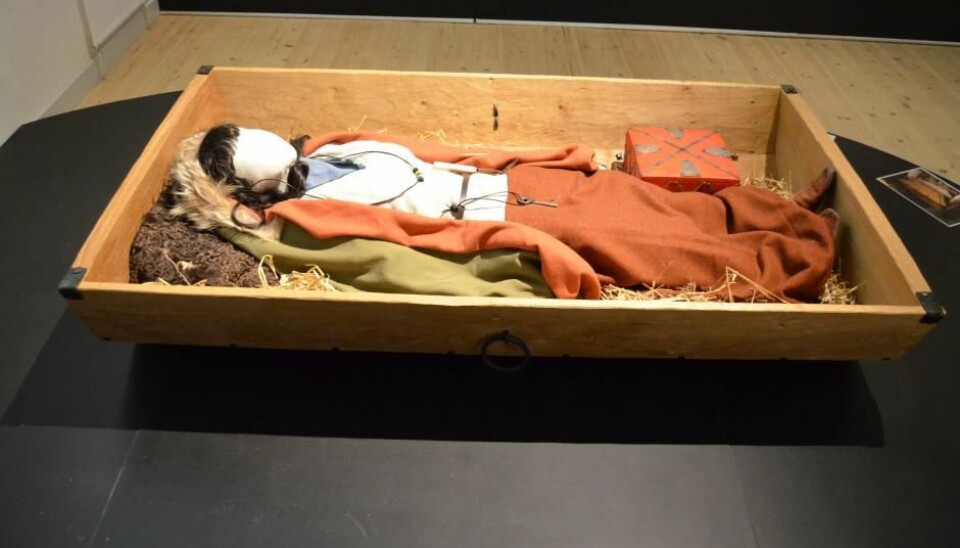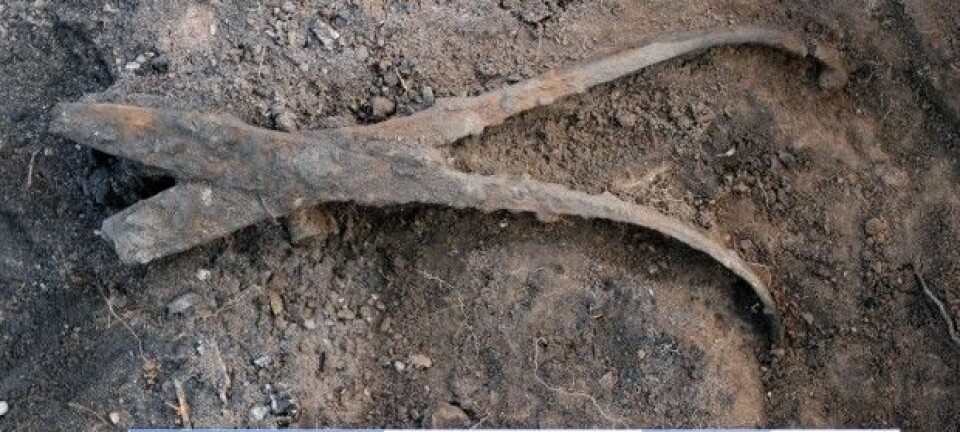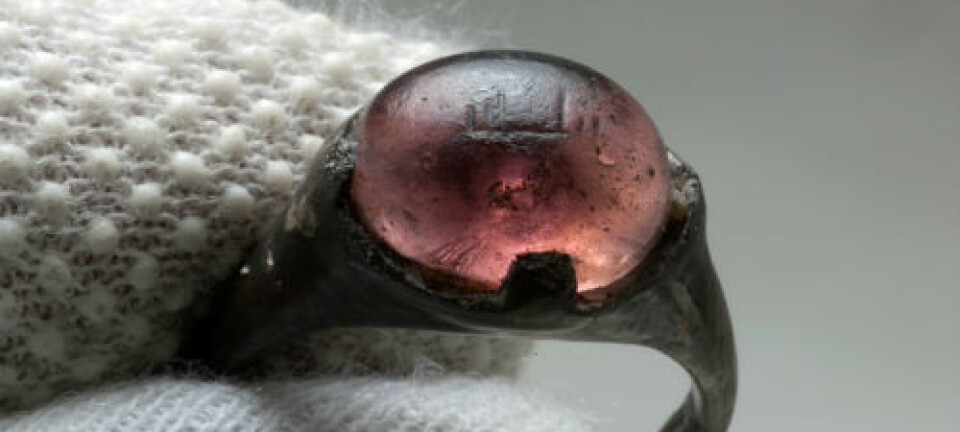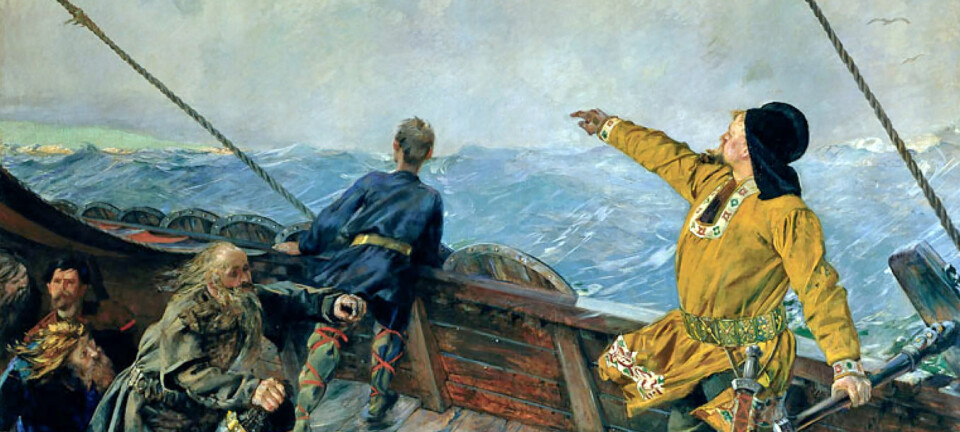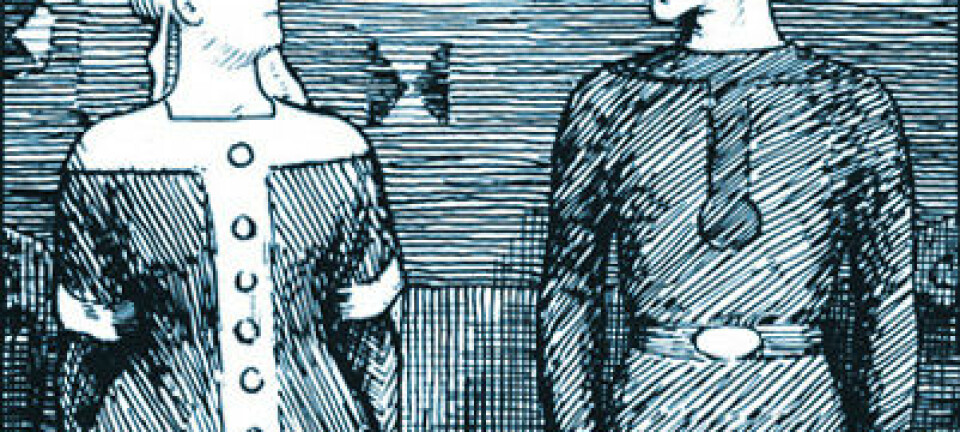Unique Viking tomb contains remains of noble couple
A Viking tomb in Denmark contains the rare remains of two men and a woman and offers more evidence of an international Viking culture.
A tomb discovered as part of a large Viking burial ground in south west Denmark contains the remains of a Viking noble or at least a highly distinguished person.
The grave was discovered in 2012 when engineers were building a highway, and it has since been identified as a unique Viking tomb known as a ‘dødehus’ [death house]. The building measures four by thirteen metres and contained three graves dating back to 950 CE.
The axe was the Viking machine gun
Soil conditions at the site have prevented the preservation of any other remains.
“But the finds in the tomb confirm that there was a man and a woman in the main part and another man in the back,” says excavation leader Kirsten Nelleman Nielsen, who has described the finding in an article called 'Dead and buried in the Viking Age' published by Saxo Institute at the University of Copenhagen, Denmark.
The man buried in the main part of the building was buried with a great battle axe.
"It’s a very large axe and would have been a formidable weapon. People across Europe feared this type of axe, which at the time was known as the Dane Axe--something like the ‘machine gun’ of the Viking Age,” says Nielsen.
The woman was buried with her keys
The woman was buried in a wagon typically used by women of noble birth, and with two keys found in the tomb.
"One is a symbol of her power and status as a great lady, the other fits a small square shrine that was also buried with her and is quite rare,” says Nielsen.
A distinguished couple
The special markings of the grave indicate that the pair must have had a high social status.
“It could be the gentlemen and the lady of the local area and maybe their successor. They’ve at least been honoured in a special way, so they must have been important,” says Nielsen.
And it is not just the tomb that is special.
“It’s very special that the man and woman’s graves are marked by the same tomb or palisade. It’s unusual that we’re able to establish that the man and woman were equals with such certainty,” says Nielsen.
Women could easily have had high status
Other Viking graves found in Denmark indicate that there were many women of high social status, says archaeologist Henriette Lyngstrøm from the University of Copenhagen, Denmark.
“Women may easily have been very powerful. Many women were buried in rich clothes with many expensive grave gifts, which all indicate a high position [in society]. These women were not buried in an inferior way to men,” says Lyngstrøm.
She has seen examples of shared graves before, but the way that the men and women are laid in this grave does indeed indicate a powerful couple, she says.
Inspired by foreign cultures
Nielsen believes that the inspiration for the tombs may have come from afar.
"It wouldn’t surprise me that the idea came from [outside Scandinavia]. We’ve also found Baltic ceramics in the form of a clay vessel and silver coins from what is today Afghanistan, so the residents must have been quite international,” she says.
She suggests that the traditional wooden stave church, once common throughout northern and western parts of Europe, may have had a similar structure.
"The design is a bit like an early stave church, so maybe someone saw such a place elsewhere and made something similar."
The Vikings travelled far and wide
The international finds from the excavation offer further evidence that the Vikings travelled far and wide.
"Many of us think that people didn’t move around much in the past. But [the Viking grave] is a good example of how the opposite is true,” says Nielsen.
Lyngstrøm agrees.
“I don’t know where the myth originated. Plenty of evidence shows that the Vikings had objects from foreign lands. People were hugely mobile in the Viking Age,” she says.
Translated by: Catherine Jex
